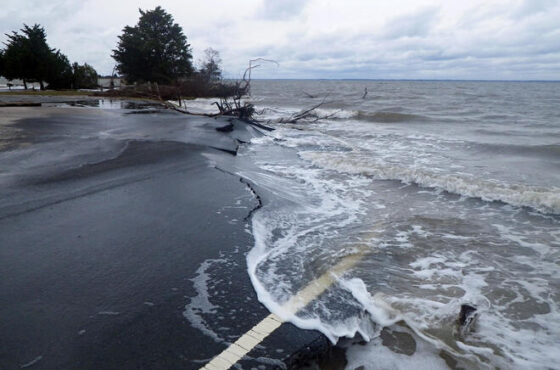FERC Should Remove Barriers to DER & Storage in Markets
Published by the Natural Resources Defense Fund
FERC Should Remove Barriers to DER & Storage in Markets
The Federal Energy Regulatory Commission (FERC)—the agency tasked by Congress to remove barriers to competition in the wholesale electricity markets—has proposed a rule seeking to remove several such obstacles to electric storage and distributed energy resources (DERs), such as electric vehicles plugged into the grid and rooftop solar panels. But opponents are trying to slow-walk parts of the rule, which will only delay modernization of the grid and result in inefficient use of existing resources and unnecessarily higher prices to customers.
Comments on FERC’s proposed rule are in, and the consensus—among transmission grid operators, utilities providing power to customers, state public utility commissions, university researchers, think tanks, public interest groups, trade associations, companies supplying these resources, and others—is that storage and DERs benefit the power system and that FERC should remove barriers to their ability to contribute these benefits. Despite these documented benefits and barriers—which no one can reasonably deny—a couple of lone commenters representing companies that would face competition from these new resources are seeking to slow-walk parts of the rule. Hopefully, FERC will see past the delay tactic and finalize the rule in a timely manner.
Electric storage and distributed energy resources (DERs)
Newer DERs and storage resources tend to be smaller and more nimble than traditional fuel-burning power plants and have the added advantage of being sited close to where electricity is consumed (reducing the amount of energy lost in transport and the risk of transmission failing along the way). DERs and storage can also help smooth out the variability in wind and solar generation by absorbing electricity when there is abundant wind and sunshine for later use, when electricity generation is more expensive.
As FERC recognized in the proposed rule, DERs and storage can provide multiple services to customers, the high-voltage transmission grid, and the lower-voltage distribution grid. For example, grid-enabled water heaters can heat water at times when electricity prices are lowest for end-use customers, avoid costly distribution grid infrastructure enhancements by reducing electricity demand at peak times, and provide transmission grid stabilization services (known as “frequency regulation”). Grid-connected electric vehicles (which have built-in batteries) can do much of the same—charge when electricity prices are lowest but also provide distribution and transmission grid services on the side.
In the regions where DERs are allowed to provide grid services for compensation, customers investing in DERs can earn extra cash, while the grid benefits from low-cost services. As these and other technologies increase their presence on the grid, it makes sense to tap into their potential for low-cost grid services while they would otherwise be sitting idle.
Barriers
The problem is that only some regional grid operators allow for some of these resources to compete to provide some of their services to the transmission system. (But there is no rationale for this inconsistency in limiting or barring DER and storage participation in the markets.) For example, California’s grid operator is the only one that explicitly enables DERs to participate in its markets through aggregators (typically businesses that put together portfolios of smaller resources to participate at wholesale as a single resource). The grid operator for the Mid-Atlantic and parts of the Midwest allows aggregated water heaters and other storage devices to provide frequency regulation. But even in the regions where DERs and storage can offer their services into the market, they may not be able to contribute their full value because the market rules were designed around traditional power plants and consumers. For example, storage or electric vehicles that could flexibly toggle between providing similar benefits as electricity generators and as customers sponging up surplus electricity from renewables (that would otherwise be wasted) don’t have the right channels through which to fully participate.
DER and storage resources are also smaller relative to traditional generation and may not meet minimum size requirements to participate in the wholesale electricity markets. These requirements, which vary by region, as well as the relatively high transaction costs (navigating complex regulatory requirements and paying market entry fees) that smaller resources face also prevent these resources from offering their services in FERC-regulated markets.
FERC’s proposed framework
FERC’s proposed rule helps eliminate barriers to storage and DERs competing to provide services in the wholesale electricity markets in two ways: (1) require FERC-regulated grid operators to fashion market participation rules taking into account characteristics of storage; and (2) enable DERs to aggregate to participate in the wholesale electricity markets. FERC’s proposed aggregation rule is critical to DERs in overcoming barriers associated with being small and is similar to FERC’s existing rules on demand response and the California grid operator’s DER rule.
Timing
FERC’s proposed rule sets up a basic framework, minimum requirements, and a timeline for the regional grid operators and their stakeholders to develop region-specific rules and implementation schedules. After FERC finalizes the proposed rule, the regional grid operators and their stakeholders have a specified period of time to work out issues and develop their rules—this period and the effective date for implementation could be extended if necessary.
Commenters trying to delay finalizing the rules attempt to raise issues that are actually best dealt with during the regional stakeholder processes, such as resolving potential coordination issues between transmission grid operators and distribution control centers. They also argue that the part of the rule enabling aggregation of DER resources should be severed from the rest of the rule and go through processes beyond what is required for federal agency rulemaking procedures (amounting to unnecessary red tape in this case). Those procedures include a comment period to develop the administrative record, and now that the comments are in, the record evidence solidly supports FERC’s proposal to enable DERs to aggregate to compete in the markets.
In fact, FERC’s proposal to allow DERs to aggregate follows logically from a long arc of FERC study and activity: FERC as early as 2007 recognized the transmission system benefits of distributed generation and some of the regulatory obstacles impeding its growth, and in 2008 FERC finalized a rule enabling demand response (a class of DERs) to participate in the markets through aggregators. FERC-regulated entities as early as 2011 have recognized the need for transmission grid operators to better account for DERs, and in 2016, FERC approved California’s rule to enable DERs to aggregate to compete in its markets.
Asking FERC to jump through additional, unnecessary administrative hoops is simply foot-dragging at this point and would get in the way of FERC satisfying its mandate to ensure that its regulated markets are open to competition—which is why some are attempting to stall the rule. Hopefully, FERC will see through this and take the next step in opening its markets to competition from a newer generation of nimble, flexible, reliable, and cost-effective resources.
Read the full article at: https://www.nrdc.org/experts/jennifer-chen/ferc-should-remove-barriers-der-storage-markets




